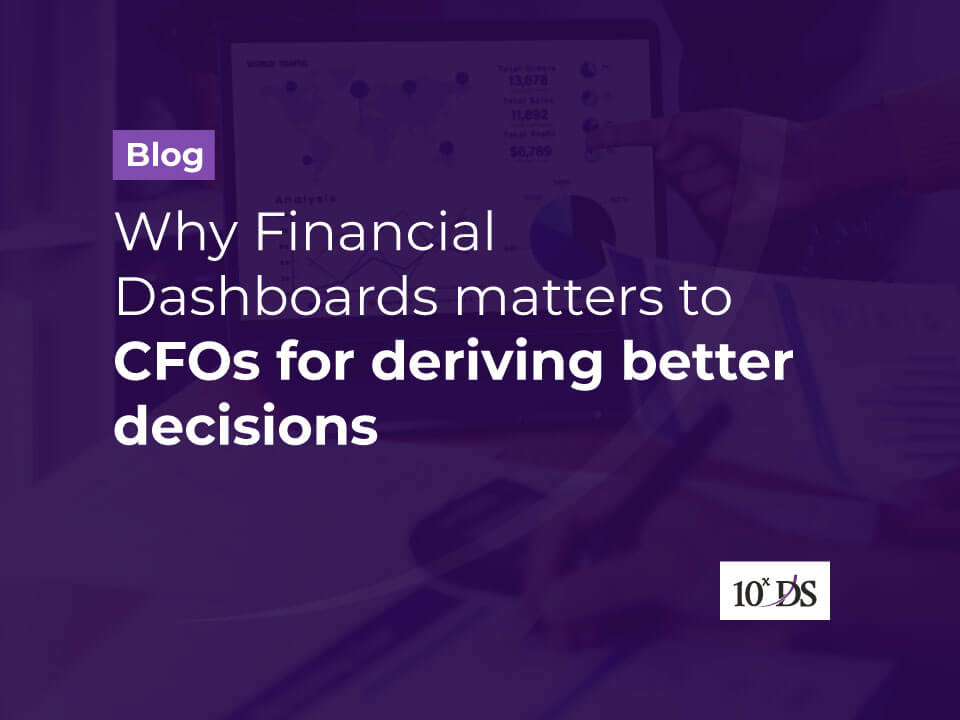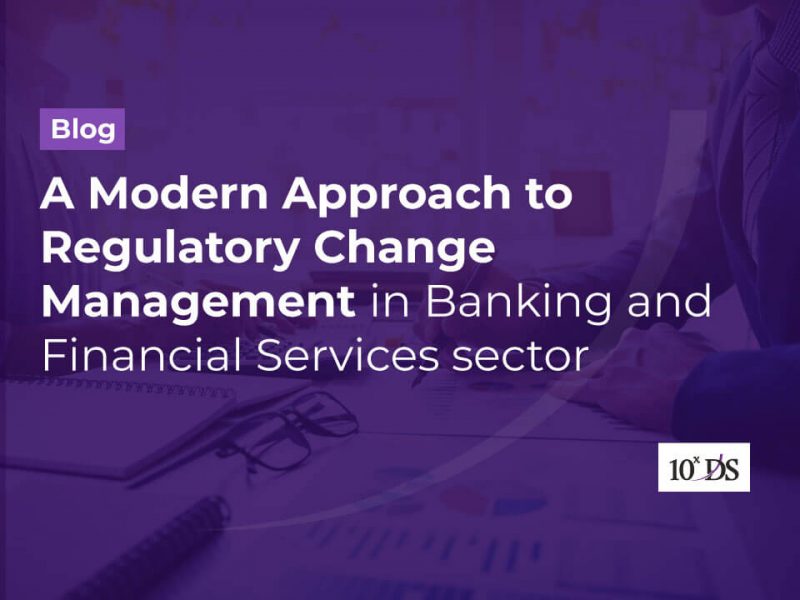
Why Financial Dashboards matters to CFOs for deriving better decisions
Businesses all over the world are facing a sea of data points more than ever before in this period, therefore making it complicated for the decision makers to arrive at fruitful turnouts. CFOs (Chief Financial Officer) and business leaders rely on numbers to make smart decisions. A financial dashboard could help a CFO or Finance Director to maintain a high-level overview of their company’s financial status and performance. It supports them to maintain operational oversight and plan for future eventualities as it could provide real-time insight into both the numbers and the stories behind them. Financial Dashboards are therefore critical in making assessments, closing more sales, for making better decisions and reducing customer acquisition costs.
Types of Financial dashboards
A financial dashboard is a management tool that helps to track all your relevant finance KPIs. It includes Wealth Management dashboard as well as Investment Portfolio dashboard. Based on the people who are using the dashboards, it could be strategic, operational, analytical, or tactical. The metrices that are used for your financial dashboard vary depending on the purpose. Below are few examples of Financial Dashboards for making strategic decisions in an organization.
1. Sales & Marketing Financial Dashboard
A good sales and marketing financial dashboard give the leaders insight into critical KPIs that drive strategic decision-making. This dashboard includes metrics like Number of Deals created, Average Sales Cycle, Deal Conversion Rates, Average Sale Price, Sales Ramp, Annual Contract Value (ACV), SaaS Bookings, Customer Count, Customer acquisition cost (CAC), Pipeline and Revenue Retention.
2. Financial Performance Dashboard
A financial performance dashboard provides insight into the financial health of the business and operational efficiency. Metrics like Cash Conversion Score, Burn Multiple, Cash Inflow and Outflows, Gross Profit, Gross Margin, Expense Composition, Operating Income, Accounts Receivable (AR) Aging, Accounts Payable (AP) Aging, Billings and Collections make this dashboard much useful, so that you spend less time investigating issues.
3. The CFO Dashboard
The right dashboard can help CFOs and their team’s surface actionable insights so they can assume a more strategic advisory role for the business. When executives have real-time insight into financial metrics, they can speed up the board deck prep process and unlock the strategic value of board members. And they can make more informed decisions about things like the product roadmap, pricing changes, and budget allocation. This CFO dashboard provides an overview of efficiency metrics and financial data so finance leaders can maintain a higher-level view of the company’s growth trajectory. Finance leaders need total visibility into the financial and operational health of the business, which is why this dashboard should include metrics like CAC, Magic Number, Rule of 40, SaaS Quick Ratio, Customer Lifetime Value, Revenue Retention, Cash Runway, Net Burn, Cash Balance, and Recurring Revenue.
4. The Executive Dashboard
An executive dashboard gives a high-level visibility into the health of your business. It can be built including certain key metrics like Annual recurring revenue (ARR), Cash Balance, Customer count, ARR Changes, Expenses by Account Category, Top Vendors list and Headcount Composition.
5. Forecast vs. Actuals Financial Dashboard
A good forecast vs. actuals dashboard helps finance turn budget variance analysis from a basic reporting exercise to a strategic task. Total revenue compared to plan, a budget vs. actuals reports for income statement groups, net burn compared to the budget, variance analysis for balance sheet forecasting, short-term cash balance compared to your goals, total headcount broken out by department are few metrices which can be considered here.
6. Cash Flow Analysis Dashboard
A finance leader needs to keep a finger on the pulse of the company’s cashflow and need to be able to forecast cash position accurately as strategic plans evolve. This can be achieved through a cash flow analysis dashboard by adding crucial metrics such as Cash Balance, Net Burn (including trends and changes), Cash Runway, Collections, Cash Flow Statement, Cash Inflows and Outflows etc in the dashboard.
7. Headcount Analysis Dashboard
Helps in tracking the headcount changes which is crucial for identifying trends that will improve headcount planning. Metrics like total headcount, headcount composition, headcount changes, headcount start and end lists, Employee Retention Percentage, etc make this dashboard important.
8. Pipeline Analysis Dashboard
You can use a pipeline analysis dashboard to have deeper conversations with sales and marketing leaders throughout the quarter. Few metrics in a pipeline analysis dashboard can be Cumulative Pipeline, Pipeline and Weighted Pipeline, Top 10 Open Deals in Pipeline, Pipeline List, Closed-Won and Closed-Lost Lists and Stale Pipeline List
9. SaaS Acquisition Metrics Dashboard
A SaaS acquisition metrics dashboard can provide a complete overview of the efficiency and effectiveness of all efforts of the organisation to drive growth. Among the different SaaS financial metrics, the most critical are Acquisition Spend, Customer Acquisition Cost, CAC Ratio, CAC Payback, Customer Lifetime Value, SaaS Magic Number, Customer Cohorts Scheduled Revenue etc.
Every financial dashboard serves a different need and a variety of analysis. To create a financial dashboard, you must determine its purpose and then decide which metrics you’ll need to include based on your goal. Based on the platform or business intelligence tool you’re using, building a financial dashboard can vary in its timeline.
Few Best Practises:
- To get the best possible return on your investment, take advantage of your software’s automation capabilities. Your dashboard tool should have features like connection to multiple data sources, mechanisms for sharing repeat reports and KPI Monitoring as your KPIs can help you break down even the loftiest of goals into achievable steps.
- It is always best to keep the dashboard simple. Avoid accumulating too much nonessential information and obscuring the more important points. It should function as a quick pulse-check for only the most important parts of your business. Doing so can have the added benefit of unifying your business’ direction.
- While you should focus largely on the metrics that are most relevant to your business goals, you should still be sure to create a holistic representation of your company.
- Choose your charts and graphs (Visualisation tools) wisely to help display information in the best way possible. There are endless tricks you can use to organize your dashboard’s data in ways that are far more visually stimulating than anything Excel is capable of.
- Make sure you cater effectively to your audience. Ensure that the dashboard is easy to read and understand. As a CFO, you have a lot of things on your plate, so you’ll want easily digestible information.
Conclusion
Financial dashboards are vital for evaluating performance, closing more sales, making smarter decisions, and lowering client acquisition expenses. As discussed, there are various types of financial analysis that may be performed with each dashboard. The dashboards’ intended audience determines whether they are intended to be strategic, operational, analytical, or tactical.
If you haven’t yet started to build financial dashboards for your business and are currently looking for a solution 10xDS can help. Whether you’re an accountant or a CEO, we have solutions that will fit your needs.
Talk to our experts to know more.

